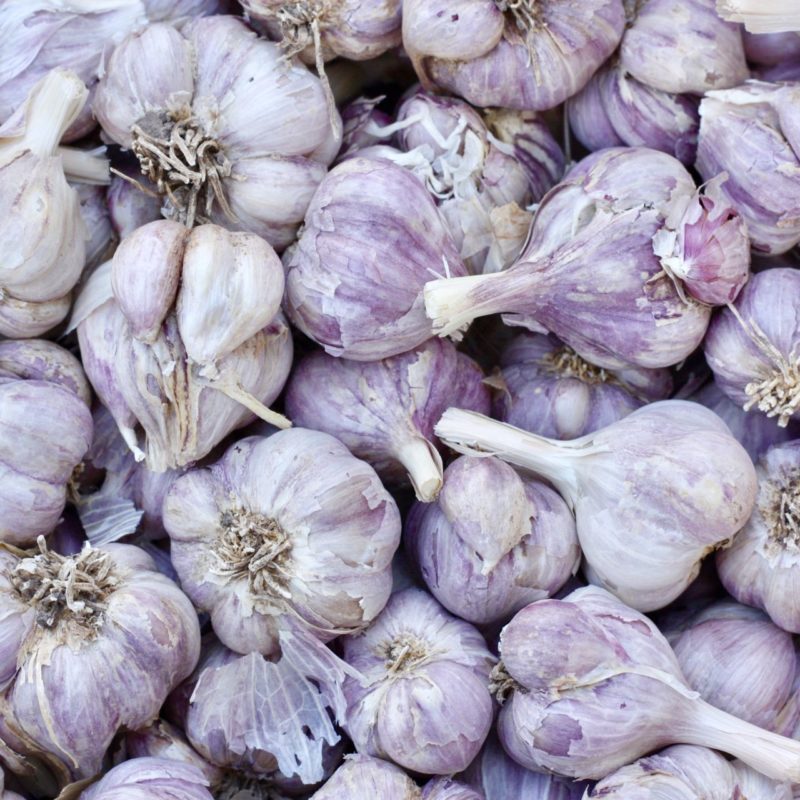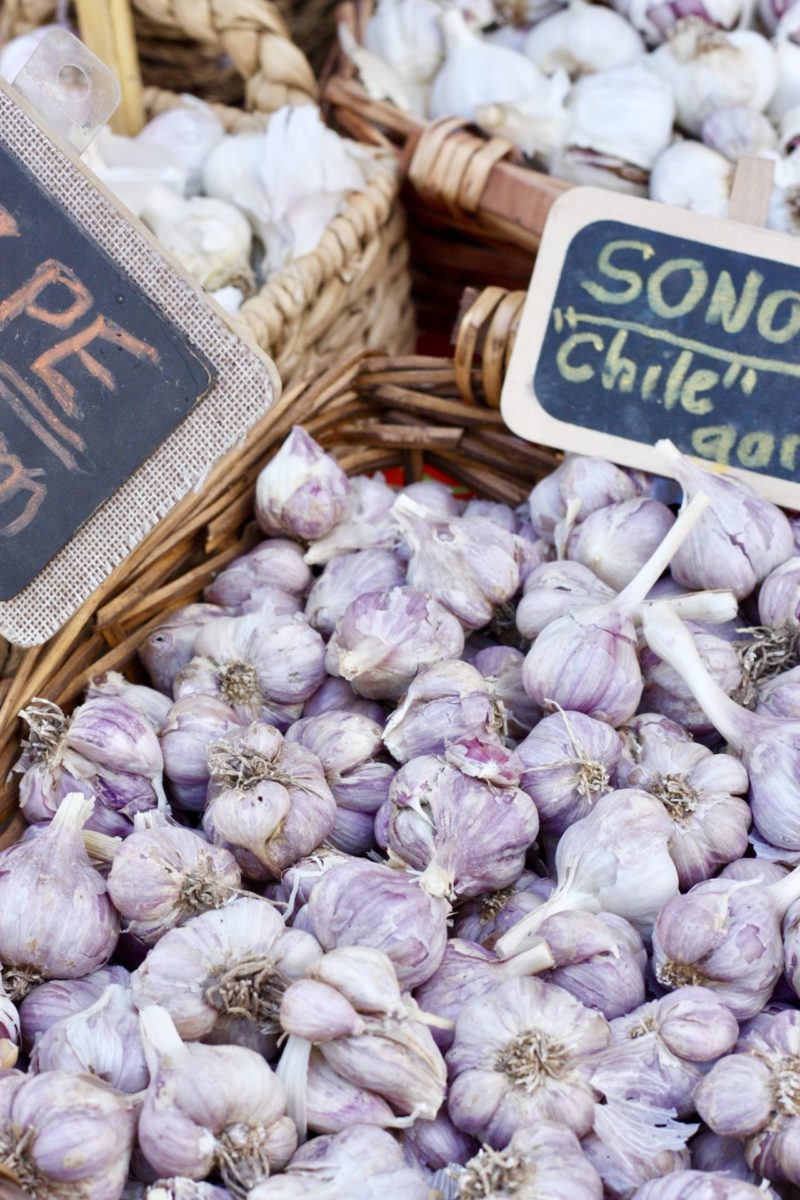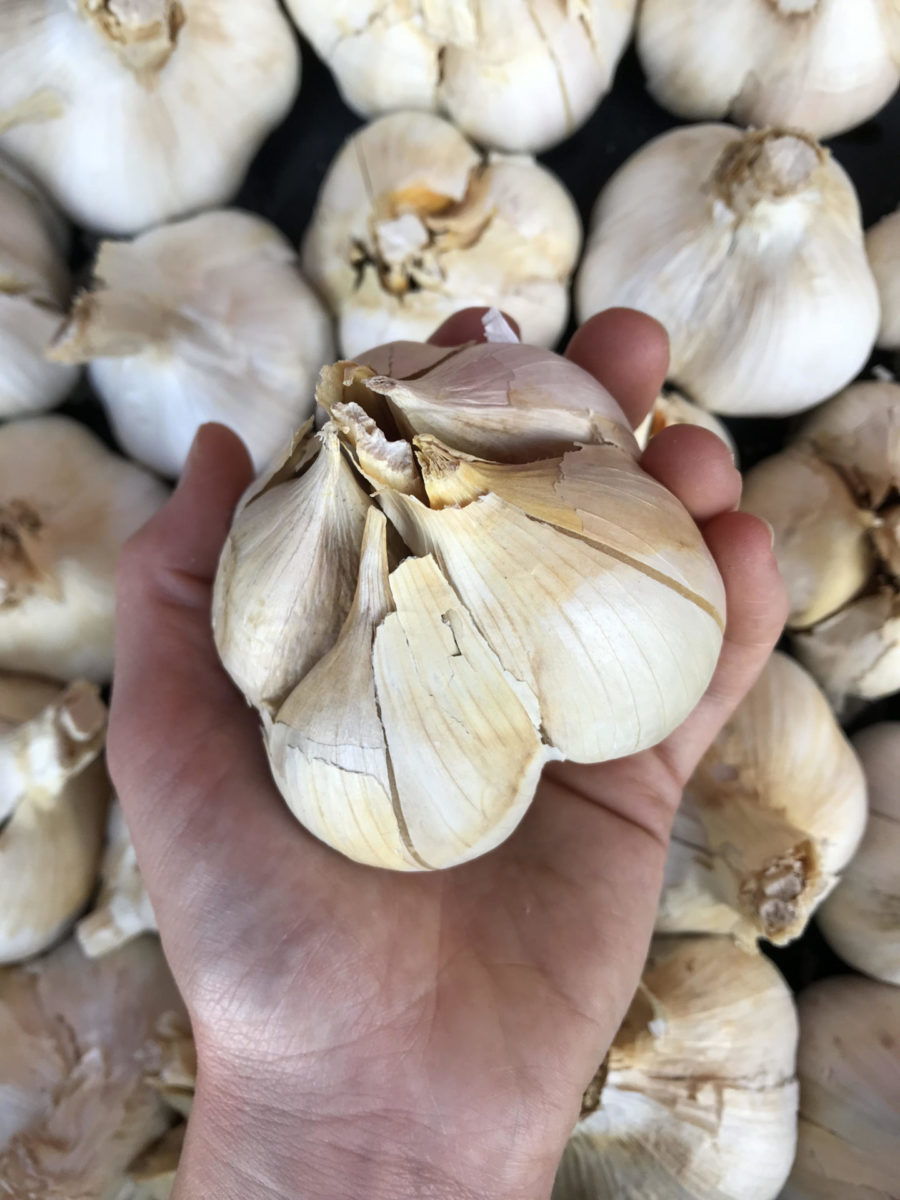Garlic Season

Garlic is a magical thing to grow. Plant one clove beneath the soil and in a matter of months it will multiply, eventually forming an entirely new bulb of garlic. In southern Arizona, garlic is planted in the fall because it requires four to six weeks of cool weather to vernalize (induce the seed’s flowering process) and produce roots. When the weather begins to warm, typically in early spring, each plant produces a seed stalk, which is often removed to redirect the plant’s energy to the bulb. These stalks, also called “garlic scapes”, are spicy and garlicky and can be prepared (and eaten) like a tender spring vegetable. Later in the spring, once the bulbs have formed but the cloves haven’t, plants can be harvested as green garlic – which is milder and more earthy but can largely be used the same ways that cured garlic is used. Mature garlic is harvested in June and July and is typically cured (left to dry) for a few weeks in a cool, dark place so that it will keep better throughout the rest of the year. At Tucson CSA we’re lucky to get a few different varieties of garlic, each of which varies in taste and texture.
Spanish Roja Garlic
The Spanish Roja garlic we’ll see in our shares in the coming weeks is grown by Aaron Cardonas of Arevalos Farm. Aaron is a third-generation farmer who farms on his family’s land in Double Adobe, Arizona and is committed to helping other farmers in Cochise County to grow produce. One of the ways he does this is through a farm cooperative, which give other farmers in the area access to equipment, seed, knowledge, and a more stable market. Together with his cooperative, Aaron grows Mechudo Beans, Tohono O’odham Yellow-Meated Watermelon, cantaloupe, onions, garlic, chiles, and, of course, Spanish Roja Garlic.
Spanish Roja Garlic is an heirloom variety of garlic which is believed to have originated in, you guessed it, Spain. It was brought to North America in the 1800s and was first grown in the Pacific Northwest region before making its way across the rest of the continent. According to Ark of Taste, “Out of some fifty tastings conducted around the United States, Spanish Roja ranked among the top two or three.” The delicate bulbs require hand-harvesting, making it near impossible to grow on a large scale. Instead, this variety of garlic is mainly grown on small-to-medium sized farms and in home gardens. Spanish Roja Garlic is garlic-lovers’ garlic. With a beautiful reddish-purple color and easy-to-peel skin, this sweet and spicy variety is rich and flavorful. When cooked, Spanish Roja takes on a robust, complex flavor that adds depth of flavor to any dish.
To experience it in its raw form, add a few cloves to pesto, yogurt sauce, hummus, and vinaigrette, or toss the minced stuff with hot French fries for true bliss. (Due to its spice level, when using this variety raw you might start with one clove and add more to taste.) For a more subtle flavor, add Spanish Roja to soups, curries, stir fry, sauces, and any other cooked dish that includes garlic.
Spanish Roja Garlic will be included in Tucson CSA produce shares in the coming weeks. It can also be purchased in the CSA Shop for $4 for a half pound.
Elephant Garlic
Although elephant garlic looks like (gargantuan) garlic and grows like garlic, this allium is more closely related to leeks than to garlic. Of course, the “elephant” in elephant garlic refers to its large size, which can easily fill the palm of an adult human’s hand. Surprisingly, its flavor is more mellow, sweet, and subtle than other, smaller garlic varieties, and so it can be used in larger quantities without overpowering the dish to which it is added. As it lacks the sharp, pungent flavor of true garlic, elephant garlic isn’t suitable for all dishes for which garlic is called.
Elephant garlic can be used raw without much risk for bitterness or overwhelming heat – try adding it to sauces and vinaigrettes for a more subtle garlic flavor. When cooked, it develops a rich and sweet flavor, similar to leeks and onions. Try roasting it in its skin, then adding it to creamy bean dips or simply spread it on a piece of bread with a drizzle of olive oil and a pinch of salt. Or, mix cloves with carrots and potatoes and roast the vegetables under a whole chicken so that the chicken fat drips down and cooks them into flavorful perfection.
Elephant garlic from Crooked Sky Farms will be included in Tucson CSA produce shares in the coming weeks.

